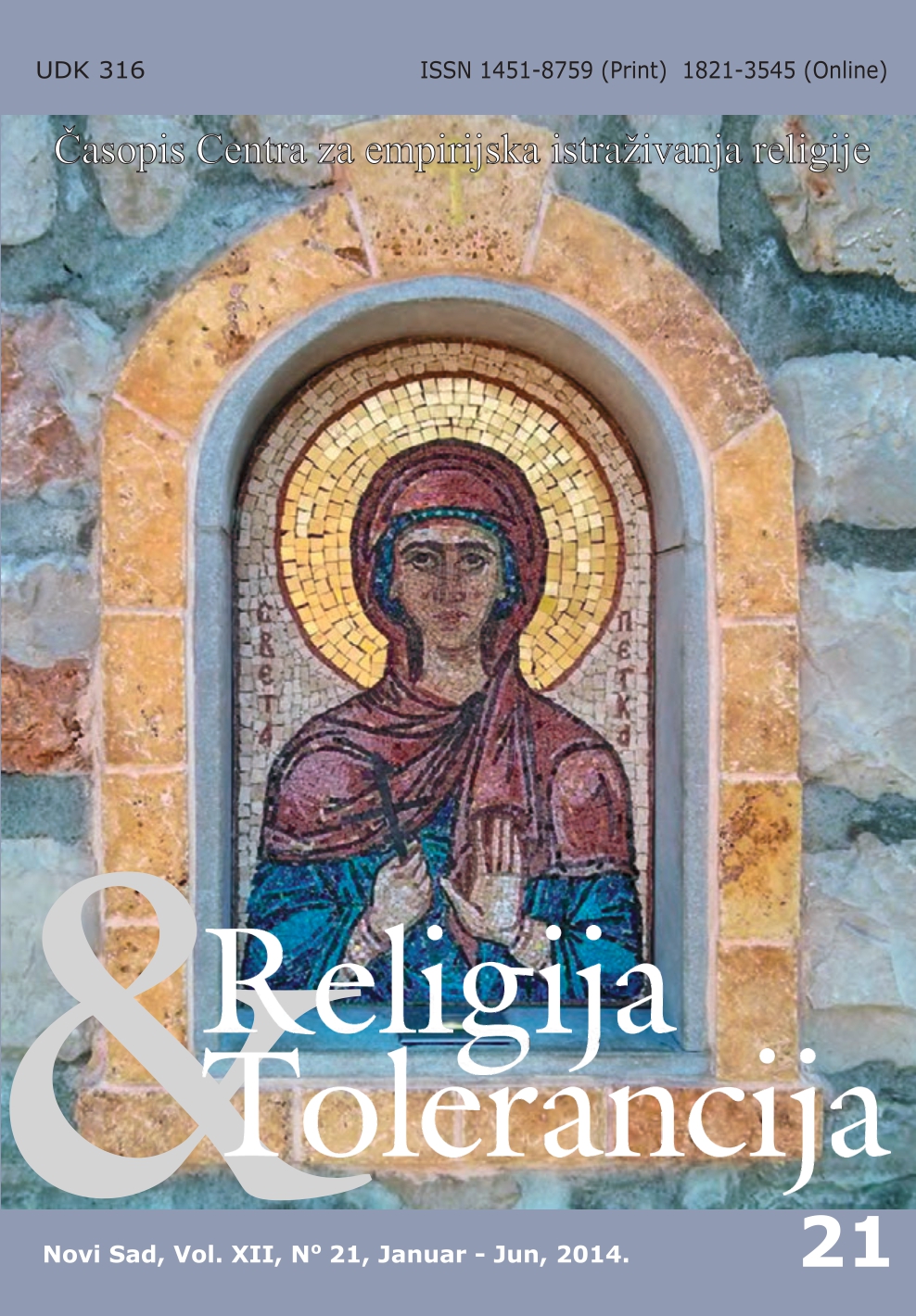БЕКТАШИЗАМ – ШИИТСКО-АЛЕВИТСКА ДИМЕНЗИЈА ИСЛАМА НА ЗАПАДНОМ БАЛКАНУ
BEKTASHISM: SHIA-ALEVI DIMENSION OF ISLAM IN THE WESTERN BALKANS
Author(s): Danijel SavićSubject(s): Christian Theology and Religion, Theology and Religion, Islam studies, Comparative Studies of Religion, Sociology of Religion
Published by: Centar za empirijska istraživanja religije (CEIR)
Keywords: Bektashism; Hadji Bektash; shi'ism; dervishes; Naim Frasheri; Albania
Summary/Abstract: When it comes to the Western Balkans, one of the numerous and influential dervish orders certainly is Bektashi dervish order. Bektashi dervish order originates in the region of Anatolia in XIII and XIV century. Due to its fundamental characters that embodied in the comprehensive syncretism, Bektashi dervish order early XVI century takes Shiite - Alevi character, determining their religious teachings as a combination of the doctrine of Shiism and Alevism, embodied through the various elements of Sufism, mixed with elements and traditions that originating from Christianity, Buddhism, Platonism, Hurufism and ancient Turkish culture. The expansion of the Ottoman Empire, and due to certain socio-political circumstances Bektashi dervish order comes in the Western Balkans, where the territory of Albania has its stronghold and remains permanently attached exclusively to the Albanian population, including part of the Albanian population inhabiting Kosovo and Western Macedonia. During the time of its existence Bektashi dervish order happens often subject to political instrumentalization, starting by the Ottoman state in which they served as a colonizing dervishes in order Islamization of the population, and the Albanian political elite, who used them as an instrument for the sake of homogeneity of Albanian society on a religious basis. In this context, this paper gives an overview of the most important features of the Bektashi dervish order, related to their origin, the basic theological doctrines of their religious teachings, hierarchical structure of the community, religious rituals and practices, as well as expansion in the Western Balkans and the political instrumentalization of the Albanian political elite in the XVIII and XIX centuries.
Journal: Religija i tolerancija
- Issue Year: 12/2014
- Issue No: 21
- Page Range: 141-159
- Page Count: 19
- Language: Serbian

